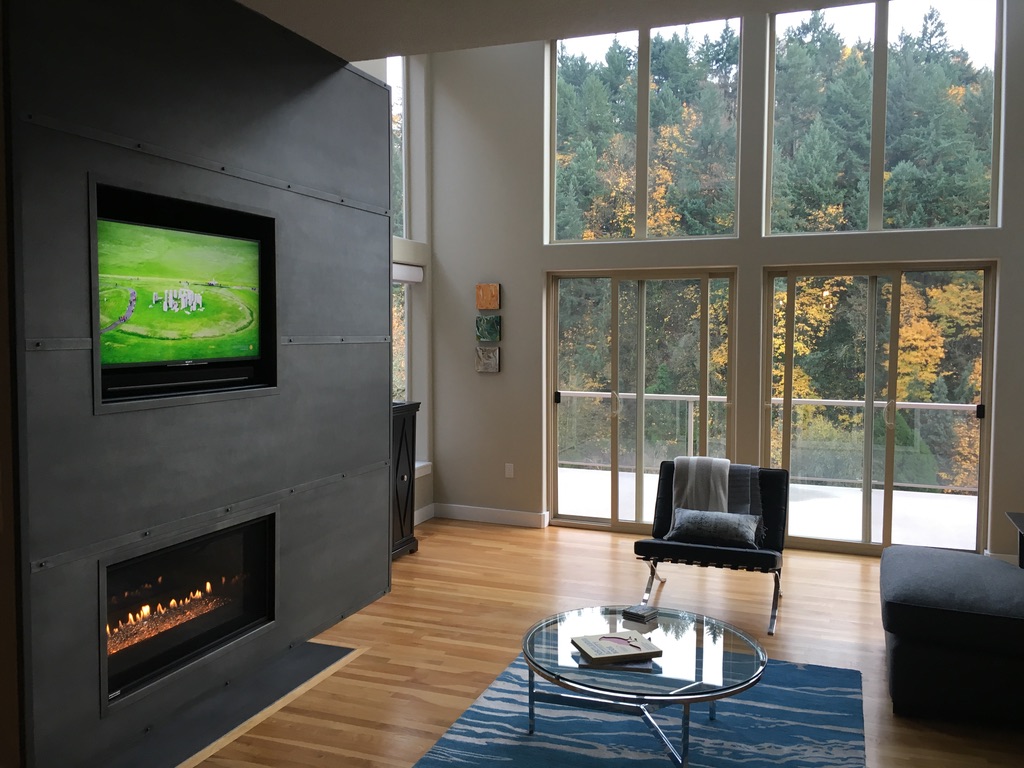How much does a gas fireplace cost in Lexington, KY?

One of the hardest parts about taking on a new fireplace project for your home is figuring out which options will work for your particular space—and how much the project will cost. Unlike buying something more familiar like a car or a kitchen appliance, fireplaces are obscure, and the litany of brands and options can be overwhelming. The good news is that you can put together an accurate budget for your project by understanding three parts that go into every gas fireplace job.
Part 1: Which fireplace is going to be right for your home?
In order to build an accurate budget for your gas fireplace, we have to start with where it’s going. Essentially, there are three different kinds of fireplaces: Fireplaces that slide into an fireplace (usually made of bricks) that’s already in the home—these are generally called “inserts”; fireplaces that are built into a wall (whether it’s a new wall or an existing wall)—these are generally called, “zero-clearance” or “pre-fab”; or fireplaces that are freestanding (usually on legs or a pedestal) and sit right on your floor—these are generally called “freestanding stoves”.
Depending on which fireplace type is right for your home, prices for this first part of the project vary. For instance, many fireplaces can start for just a couple thousand dollars, but can range as high as ten thousand—or more—for the fireplace itself depending on the size and model that’s chosen.
Part 2: How much will vent pipe cost?
After deciding which fireplace is going to be right for your project, the next step us to figure out how much vent pipe will be needed. In general, old vent pipe isn’t able to be reused (though in rare cases it can be) and connecting with a professional to go over the particulars of your project is the best way to get an exact number. As a side note, some fireplaces don’t need vent pipe all (these are usually called, “ventless” or “vent-free fireplaces), and while less expensive than vented fireplaces, they do put off an odor when in use, so make to do your research on which one will be right for you.
Assuming your job is going to require vent pipe, most gas fireplaces will use anywhere from $500 – $1,500 worth of pipe, but that can vary depending on the size of the fireplace and how many stories the home is that it’s going into.
Part 3: What should I budget for installation labor?
While every project is different, there are a lot of common traits that dictate how much installation labor will be required to install a gas fireplace.
First is demo work. Will your project need anything removed to make room for your new fireplace—say an old wood stove, a set of gas logs, or a bi-fold glass door? If so, you’ll want to factor this into your budget
.
Next is prep work to get things ready for the fireplace installation. Will you need a gas line run to the area, or floor protection installed, or a wall framed up for your new fireplace? If so, your budget will need to include this.
After that is the installation of the fireplace itself. This will include setting the fireplace in place, leveling it out, and making sure that all clearances are properly met. Along with that is installing any vent pipe that’s required and sealing up the area around the outside cap to make sure that water doesn’t get into the house.
The final step is the finish work. This will include things like tile or stone to go around the fireplace—or a mantel above it—to trim the fireplace out and complete the project. The budget for this part of the project varies because some fireplaces require finish work, while others don’t; some homeowners choose a simple tile to trim out their fireplace while others want floor-to-ceiling stone work; and some people do this part of the project themselves while others hire it out. The best thing to do when it comes to budgeting for finish work is to talk to a professional about what your specific fireplace requires and put together an estimate for this part of the project.
Conclusion: How do I choose a fireplace for my project?
Now that you have a budget in mind, a great place to start is by browsing fireplace online to see which options will work for your space. Remember to make sure you’re looking at models that fit your specific situation—i.e. models that are made to be slide into an existing open fireplace versus models that are specifically made for new construction. From there, get an estimate that includes each of the three parts needed to complete your project to see if it matches up with what you’ve budgeted for the project. And finally, schedule an appointment with a professional to come out to your house and verify that everything will work for your installation.
If you want to get started, you can click here to browse fireplaces on our website (these are organized by situation so you can easily see which ones will be right for your project). You can even get an estimate and schedule an appointment all from our website.
Taking on a fireplace project can seem daunting, but now that you understand how to build an accurate budget for the project, you’re on your way to creating an incredible that can transform your entire home.
This resource was produced with help from the team at WhyFire.
